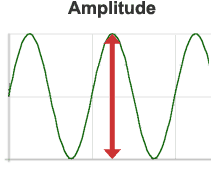Attenuator

An attenuator is a device that reduces the power (amplitude) of a signal. It is effectively the opposite of an amplifier, although it works in a different way.
In other words, an amplifier creates a gain of greater than 1, while an attenuator creates a loss (gain of less than 1).
Attenuators are normally passive devices (i.e. they do not require any power or active components to operate) that use resistors. They can be divided into several types:
- Fixed attenuator: Provides a single, non-adjustable gain level of gain reduction. Often called a pad.
- Stepped attenuator: Switches between distinct resistances, so you can choose from a series of available attenuation levels.
- Continuous attenuator: Uses a potentiometer to create a continuously variable range of attenuation.
As well as reducing signal levels for audio mixing purposes, attenuators can be used to lower voltage, match impedances, dissipate power and protect equipment from being overdriven.
Optical Attenuator
An attenuator used in an optical circuit, e.g. fiber optic.